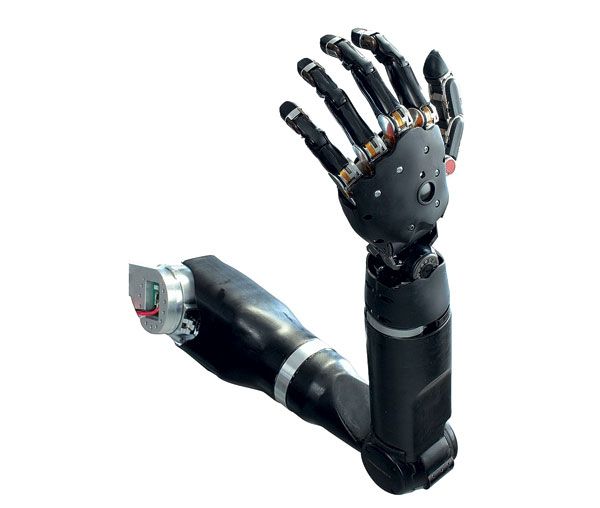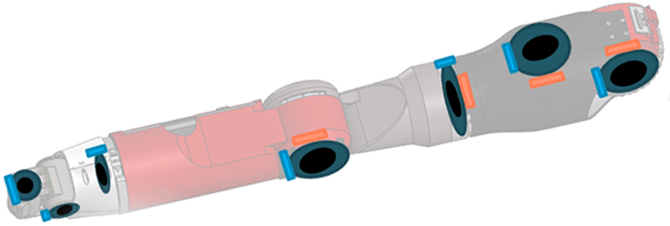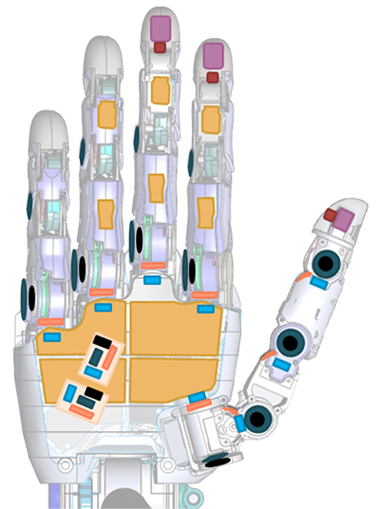A woman who has lost a hand has received one of the most advanced bionic prostheses in the world.

Melissa Loomis, living in Canton (Ohio, USA), lost her arm in 2015. She was bitten by a raccoon, and although the injuries were not too strong, the infection that got into the wound led to severe infection. The source of infection was in the forearm, which had to be amputated, because the very life of the patient was at stake.
Now Melissa has received a new limb. She feels her palm and four of five fingers. In addition, she can move her right hand and make rotational movements with her wrist and fingers. But still the differences between the new and old hands are very large. The fact is that her new hand is artificial.
The American became a voluntary participant in the testing of a new type of bionic prosthetic arm almost immediately after losing her own limb. In order to manage the prosthesis, the doctors had to perform a 16-hour operation, during which the shoulder muscles were reinnervated and the sensitivity was restored. Thanks to this, the patient was able to manage her prosthesis with the help of thoughts.
')
The head of the project Ajay Seth (Ajay Seth) believed that the first results can be seen after 4-8 months after the operation. But it all happened much faster. Loomis began to feel her missing hand after only six weeks. When Dr. Seth asked her to imagine that she was moving her wrist, the doctors saw that the muscles of the shoulder tighten and work the same way as when a person's wrist moves.
After that, the doctor drew the continuation of the hand of Loomis, showing where the fingers might be at the moment. And when he touched the painted finger, Loomis felt this touch. In general, physicians have long been aware of the phenomenon of “phantom limb”. Many people who have their arms or legs cut off sometimes feel their limbs many months or even years after the operation. A number of patients complain of "phantom pains" when an unbearably sore, for example, an absent palm or a foot itch, cut off years ago, is very itchy. All this torments the patients, and doctors in such cases perform operations on the nerve endings of the rest of the limb in order to relieve the person from false sensations.
In the case of Loomis, feeling your missing limb was vital . Without this, she could never manage a bionic prosthesis created as part of the DARPA sponsored Modular Prosthetic Limb project. The prosthesis was created by specialists at Johns Hopkins University.
The prosthesis itself consists of two parts. This transceiver attached to the nerve endings of the shoulder of a woman and the prosthesis itself with a receiver of signals. As soon as Loomis decides to move his limb, the receiver picks up signals in the nerve endings, decodes them and transmits them to the prosthesis. Bionic prosthesis responds accordingly, activating one or another servo drive system. The result - an artificial hand moves. Plus, Loomis feels 4 out of 5 fingers of his artificial hand and the “palm” itself, as mentioned above.
Creating a bionic prosthesis of this type is a difficult and expensive task. Dr. Seth had to conduct a series of talks with representatives of various organizations, before DARPA agreed to start working with him.
This month, Loomis tried her prosthesis for the first time , and she managed to achieve impressive success in managing this system. In her shoulder, there are about 100 different contacts connecting the nerve endings to the transceiver and several temperature sensors. Unfortunately, the current prosthesis is not ideal, since it’s still a long way from creating a full-fledged human-machine communication interface - this is a very difficult task. But experts managed to solve a huge number of issues related to connecting the electronic-mechanical system to the human body and create a number of new design solutions.
According to the information posted on the developer’s website, such a prosthesis is capable of performing almost all movements of a person’s arm.
MPL (Modular Prosthetic Limb) is a complex system. Now, except for Loomis, six more similar systems are being tested, and four are in development.
Features of the prosthesis:
- Anthropomorphic design and principle of operation;
- Characteristics similar to a human hand (mass, developed force, etc.);
- High accuracy of work - positioning, coverage of objects;
- Neural interface for system management;
- The ability to feel the structure of the object to which the prosthesis touches and the temperature of this object.
Sensors at the tips of the "fingers" are able to assess the force at girth of the object.


| Colour | Sensor / Sensor Type | amount |
|---|---|---|
| Position sensor | 21 | |
| Touch sensor | ten | |
| Rotation sensor | 14 | |
| Temperature sensor | 17 | |
| 3-axis accelerometer | 3 | |
| 3 axial load cell | 3 | |
| Additional sensors | 41 |
The main requirements for the prosthesis are as follows:
- Anthropomorphic design;
- Reliability of attachment of the system to the human body;
- The possibility of making copies of the prosthesis;
- The optimal weight is comparable to the weight of the corresponding limb or part thereof;
- High energy efficiency;
- Maintainability;
- Sensor support;
- The ability to transfer information about the structure of the surface to which the prosthesis touches, the feeling of vibration (if any), the surface temperature.
There are two variants of the working brush of the prosthesis - fully functional, but very different from the appearance of an ordinary human brush (such a prosthesis is cheaper). And the same functional prosthesis, copying the appearance of the brush, including color.
Modular Prosthetic Limb is one of the most advanced systems of this type. The fact is that scientists managed to use every nerve of the shoulder responsible for touch. These nerve endings were connected to the prosthesis interface. MPL fingers are equipped with touch sensors and temperature sensors. The connection of the prosthesis with the arm is two-sided - that is, when the denture touches the object, the woman can feel the touch, feel the surface structure, plus feel heat or cold.
"We are close to the fact that Loomis became the owner of the most technically advanced prosthesis in the country, and soon - all over the world," says Seth. And it seems that this is true.
Source: https://habr.com/ru/post/396849/
All Articles